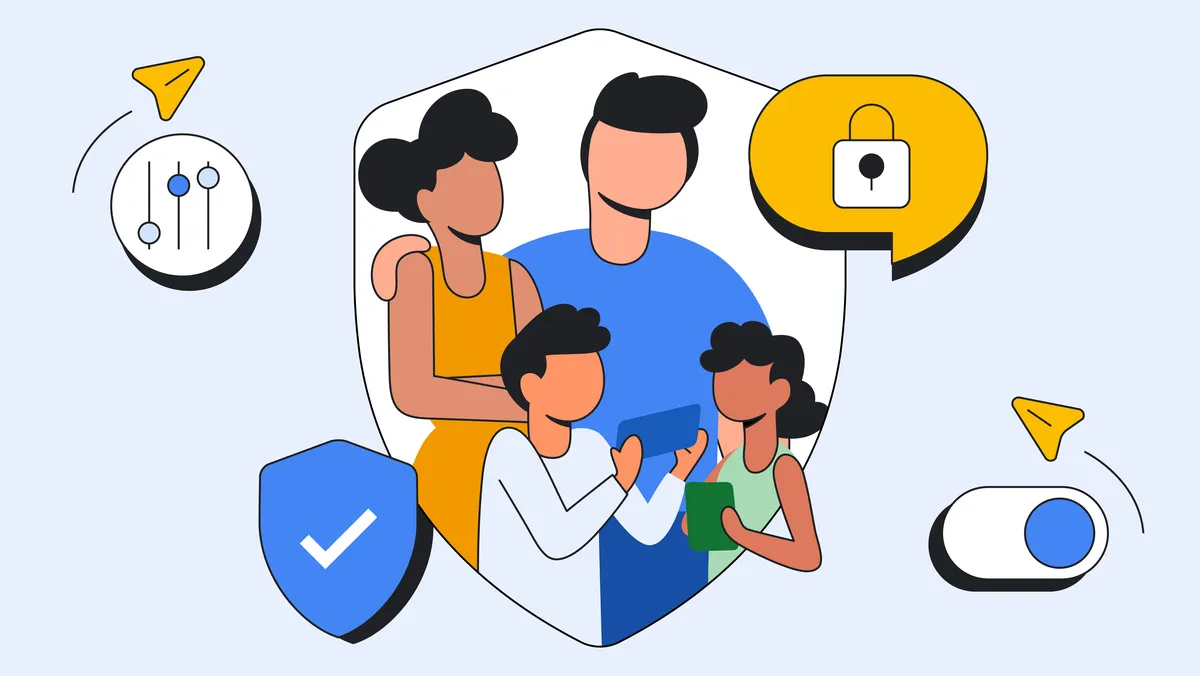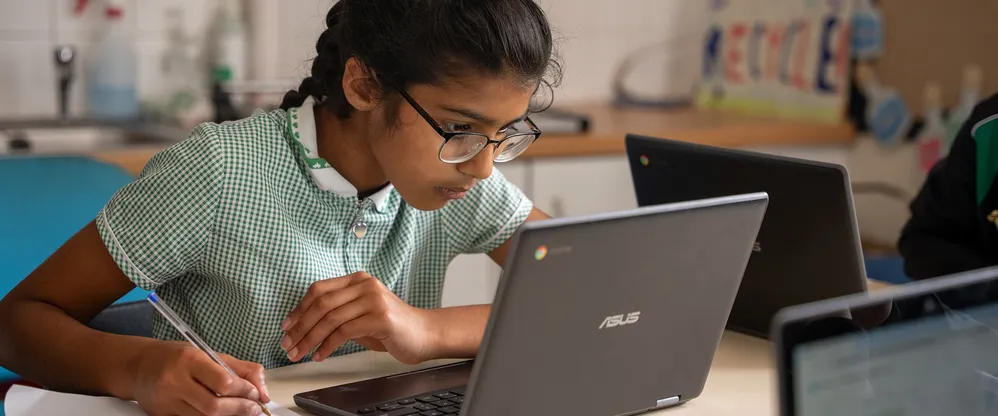4 ways parents are keeping their children safer online

We believe technology can empower kids, teens, and families to safely explore, grow, and learn online.
As the festive season begins and kids count down the last weeks of school, some parents will be considering gifting technology to their kids — with requests for mobile phones, game consoles and computers topping many present lists. However parents face the challenge of finding the best ways to keep their kids safer online by choosing the right tools and platforms to support a positive experience.
Google recently commissioned a survey of nearly 10,000 parents of 5 -17 year old children and teens across 23 countries including the European Union. The findings highlighted four key methods parents are using to keep their kids safer online, find age appropriate content and set the right screen time.
Here are four things parents are doing to help keep their kids safer online:
1. Starting conversations on safety early with their children
Nearly all parents surveyed in the EU (82%) have discussed online safety with their children in the past year, reflecting a growing awareness of its importance from an early age. This highlights the need for parents and caregivers to have the right tools and knowledge to provide their kids with safer, age-appropriate online experiences.
This proactive approach is essential, especially considering that children are being introduced to the internet at increasingly younger ages, with the survey revealing that the average child receives their first mobile phone at around 9 years old. Finding the right time to have the conversation is something parents can find challenging and whilst 70% of parents believe they initiated these discussions at the right age for their child, nearly a quarter (22%) wish they had started when their child was younger. Using initiatives like Be Internet Awesome can be a great starting point for kick-starting conversations with younger children.
2. Using time limits, parental control tools and age appropriate platforms
As children grow into teenagers and their online experiences evolve, so too must our approach to online safety. Parents report that educational apps rank among the top three reasons their teens are going online, highlighting a shift toward using devices for both learning and entertainment.
The survey revealed that 42% of parents use parental control features, such as Google’s Family Link, a mobile device tool that helps families create healthy, positive digital habits. 49% of parents set time restrictions to ensure their kids are spending the right amount of time on devices.
Striking a balance between flexible and prescriptive parental controls is crucial, as what works for younger children will not suit most teenagers. 58% of parents expect to adjust their safety rules as their children mature and using controls like YouTube Teen Supervision can help provide privacy and wellbeing protections as children age.
3. Focusing on key safety issues
Over half of parents surveyed have discussed understanding the difference between real and fake content with their children — showing increasing concern for fake content, news or material that could be used to deceive or scam. Privacy, security and inappropriate content were also key safety topics parents talk to their children about, with 1 in 4 parents feeling more concerned about these issues now than they were in the previous year.
Over half of parents believe their children’s teachers have spoken to them about online safety. With rapid advancements in technology, such as generative AI, the need for digital literacy, including in classrooms, has never been more essential. To help young people navigate new AI technology safely, the Experience AI program — developed in collaboration with Raspberry Pi Foundation and Google DeepMind — equips teachers with the training and resources needed to both educate and inspire young people aged 11-14 about AI.
4. Becoming digitally savvy so they can give the best advice
The survey revealed that 74% of parents are confident in their own knowledge of online safety and show significant interest in accessing more online safety resources. 81% of parents are also confident that their child will ask them for help if they encounter problems online.
Helping parents equip children with the right skills to navigate the internet safely and confidently is crucial. Google collaborates with civil society and educational organisations to provide programmes that foster critical thinking and online safety. Education Initiatives like Be Internet Awesome, Be Internet Citizens, Super Searchers, and Hit Pause provide age-appropriate guidance to help parents, teachers, community leaders, and children and teenagers navigate the online world safely and confidently. Through Google.org, we support around 70 organisations across Europe that deliver digital literacy education.
By working closely together — parents, teachers, technology companies, and policymakers — we can help ensure that the benefits of the internet are available to our children while minimising the risks and providing a safer, more positive online experience for young people.
Read the results of the survey here.







